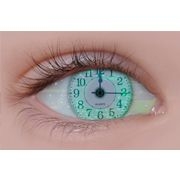 Add My Company
Add My Company
Sign In
Time Scales in Website User Experience
26-02-2010

From seconds to years, website user interface design has many different timeframes, and each has its own particular usability issues.
The website user experience field has its own version of "Powers of Ten" (the classic 1977 documentary by Ray and Charles Eames). In the "4th dimension" of time, user experience phenomena work across many powers of 10.
0.1 Second
Research has found that people can make rough decisions about a Web page's visual appeal after being exposed to it for as little as 1/20 of a second. This shows that people can form basic visual impressions very quickly, which is a big reason to emphasize clarity in content usability.
0.1 second is also the feedback time limit if you want users to feel like their actions are directly causing something to happen on the screen. For example, if you click on an expandable menu and see the expanded version in less than 0.1 seconds, then it feels as if you made the menu open up.
1 Second
When the computer takes more than 0.1 second but less than 1 second to respond to your input, users notice the short delay, but they stay focused on their current train of thought during the one-second interval.
For Web usability, this means that new pages must display within 1 second for users to feel like they're navigating freely; any slower and they feel held back by the computer and don't click as readily.
10 Seconds
After 1 second, users get impatient and notice that they're waiting for a slow computer to respond. After about 10 seconds, the average attention span is maxed out and users will often leave the site.
10 seconds is also the time users typically allocate to examining a page before deciding that it's so bad that they're going to leave. The average page visit lasts about 30 seconds - people are impatient on the Internet. Instantly gratify them, or they're out.
1 Minute
Users should be able to complete simple tasks in about 1 minute. Sites that require much more than this for basic tasks will be abandoned.
Likewise, Internet videos should last no more than 1—2 minutes because people don't like passively watching something for much longer than that.
Most website visits last about 2—4 minutes.
10 Minutes
10 minutes would be a long visit to a website. A recent study followed a user researching a B2B purchase across 25 site visits. The longest site visit? 7 minutes.
1 Hour
People complete typical Web tasks in less than an hour. Research has shown, half of e-commerce purchases occurred within 28 minutes of the user's arrival at the website. The other half were spread across longer intervals, often including multiple visits that were days apart.
1 Day
1 day is the maximum turnaround for customer service requests, although you should send transactional email and confirmation messages within 1 minute to keep users from wondering whether their action has been received correctly. At this point users assume that customer service requires human intervention, so they don't think the computer is broken if they don't hear back within 1 minute.
Many users habitually check certain content sources on a daily basis. So, if your topic warrants it, it might be smart to publish a daily e-mail newsletter. But be warned: you're begging for unsubscribes if you have a slow-moving topic and publish too often.
1 Week
Other habits are weekly (or monthly, or yearly - depending on seasons and holidays). Tasks that require extensive research or big decisions often stretch across a week or more, as users gradually progress in their thinking. So, while each individual visit to any given website might last only a few minutes, the full process takes much longer.
This means that sites must support revisitation behaviours, for example by keeping track of what users have done in previous visits.
For more information on Time Scales in Website User Experience talk to BRILLIANT - Brand, Web, Creative
Enquire Now
List your company on FindTheNeedle.
